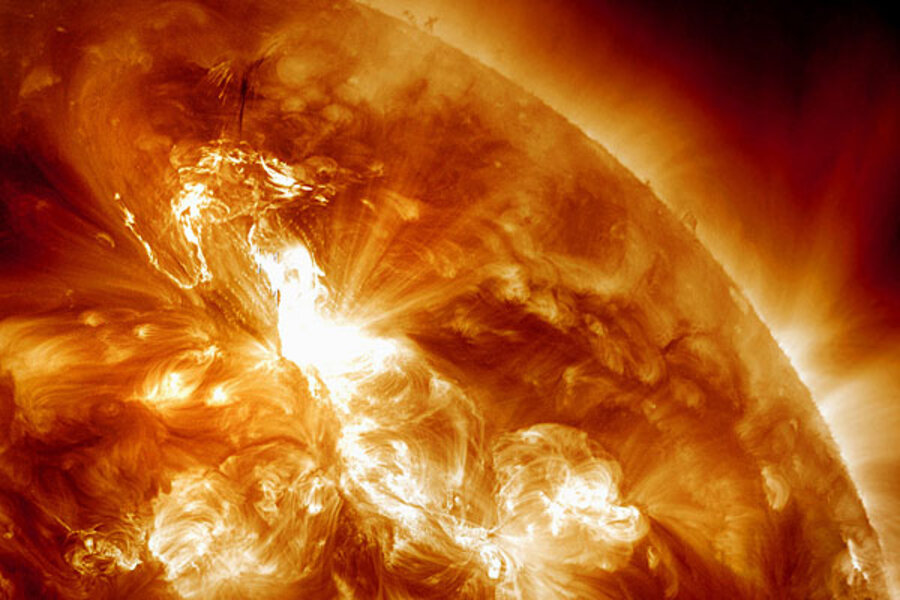After solar flare, massive storm speeds Earthward
Loading...
An outburst from the sun late Sunday night is bathing Earth in the most powerful solar-radiation storm in six years.
The radiation storm is the first act of an event that will crescendo Tuesday, when the brunt of the outburst – called a coronal-mass ejection – arrives at Earth. It could trigger a disturbance of Earth's magnetic field, leading to voltage swings in long-distance power transmission lines as well as the appearance of the northern lights as far south as New York.
The current radiation storm – rated an S3, or strong, on a scale of 1 to 5 – could damage satellite hardware and present an increased risk of radiation exposure to passengers flying at high altitudes across polar routes, say space-weather specialists. These risks, however, are expected to be manageable.
The outburst, which occurred at 11 p.m. Eastern Standard Time Sunday, marks the second major solar eruption in three days.
Sunday's event began with a moderate solar flare that was "nothing special" on its own, says Doug Biesecker, a solar physicist at the National Oceanic and Atmospheric Administration's Space Weather Prediction Center in Boulder, Colo.
But the flare triggered the release of billions of tons of energetic particles from the sun's atmosphere. This coronal-mass ejection (CME) is hurtling toward Earth at 4 million miles an hour, "by far the fastest CME directed at the Earth during the current solar cycle," Dr. Biesecker says.
CMEs are vast clouds of protons, electrons, as well as heavy atomic nuclei formed in the nuclear fusion reactions that power the sun.
This CME's unusually high speed is accelerating some of its protons to nearly the speed of light, and they are arriving in quantities not seen since May 2005.
The resulting radiation storm could cause some hardware or onboard software glitches for satellite operators. And radio communications at high latitudes, as well as navigation-satellite accuracy for high-precision uses, could suffer some degradation for the duration of the radiation storm.
A geomagnetic storm Tuesday could further affect satellites.
For satellite operators, geomagnetic storms have a Janus-like quality. If strong enough, they can produce voltages on a satellite's exterior that can be powerful enough to arc and cause damage. And the storms can increase the atmosphere's drag on satellites, causing them to lose altitude.
But such storms also can increase drag on space junk that can pose a risk to satellites, sending more of it to burn up in Earth's atmosphere.
This week's geomagnetic storm also could bring auroras to viewers farther south than usual.
Biesecker says the storm may reach a level that could render auroras visible as far south as Idaho and New York, and perhaps even Illinois and Oregon if the CME's intensity is large than estimated.





